Space Odyssey: Our first big look at Kerbal Space Program 2

This feature was originally published in PC Gamer magazine.
I don’t know much about astrophysics, aerodynamics, or anything else to do with rocket science, but I do know how to tell when someone is trying very hard to avoid saying the words ‘kerbal orgy’. New studio Intercept Games, which has taken the reins on KSP, is busy crafting a sequel, coming next year, that includes intergalactic travel, multiplayer and helpful tutorials for science-challenged players like me. Reading between the lines of my first look at Kerbal Space Program 2, the kerbals themselves are getting busy too.
Over the course of two days I spoke with the dev team about what’s new in Kerbal Space Program 2, what’s changed, and just as importantly what’s not changed, to preserve the wonderful sense of accomplishment and discovery that defined one of PC gaming’s greatest experiences. At no point did anyone say these little green explorers are so excited about intergalactic travel that they throw a spontaneous space orgy, but I’m here to tell you it’s most definitely happening.
And honestly, I’m thrilled about it. It’s hard, lonely work going where no kerbal has gone before, and they deserve to celebrate—especially because that sweet, sweet space nooky is a key part of Kerbal Space Program 2’s vastly expanded progression into the unknown.
The big boom
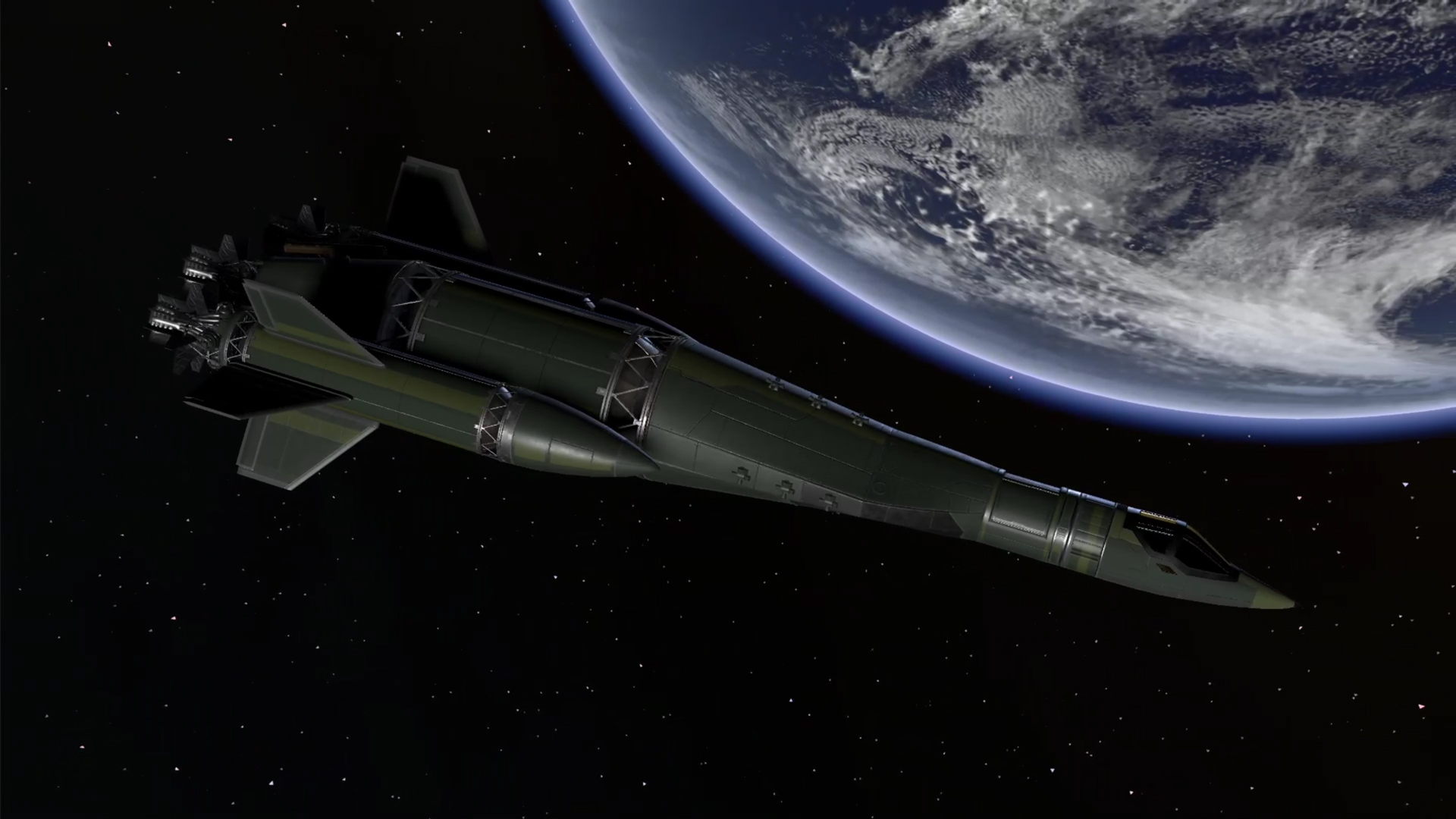
Ext: Space.
The camera pans across a desert landscape, the faint flow of starlight refracting through a layer of atmosphere at the horizon. Stirring synth chords and a bass drum aren’t quite reproducing Also sprach Zarathustra, but the tone is the same. Mysterious. Ominous? The vibe is unmistakably 2001.
Star Theory Games
After this feature was written, Bloomberg reported that publisher Take Two had recently pulled the development of KSP2 from previous partner Star Theory and formed a new studio, Intercept, with many developers moving over to the new studio. Star Theory later went out of business. I spoke with Take Two PR about the relationship with Star Theory, but PR declined to comment beyond referring me to its existing statement, published here.
Then, peeking out over the edge of a cliff, we see it—a colony on the dusty orange surface, futuristic apartment buildings on a lattice of steel support beams flanked by rows of solar panels and greenhouses. A long runway for space planes suggests how fresh supplies and colonists will reach this outpost on the planet Duna, while the ramp at the end of the runway immediately makes me want to ruin the ambience by strapping a rocket to a rover and seeing how far it could jump. The kerbals, I think, would certainly understand.
Flying to the Mun and beyond is just the beginning of your progression through the solar system and, eventually, the galaxy. To reach those far-flung stars, you’ll now be able to establish orbital and planetary colonies, staging grounds for the next leg of your cosmic journey.
“[Colonies are] capable of producing colonists through a method that we will not describe, for everyone’s sake, after something that the player initiates called a ‘boom event’,” says lead designer Shana Markham. Throughout Kerbal’s new career mode, which the developers have nicknamed ‘adventure mode’, making discoveries and unlocking new technologies will trigger these boom events, which kick off various effects across your civilisation. In a colony’s nursery module, for example, that means making new colonists. “You know, discoveries make kerbals happy,” Markham says.
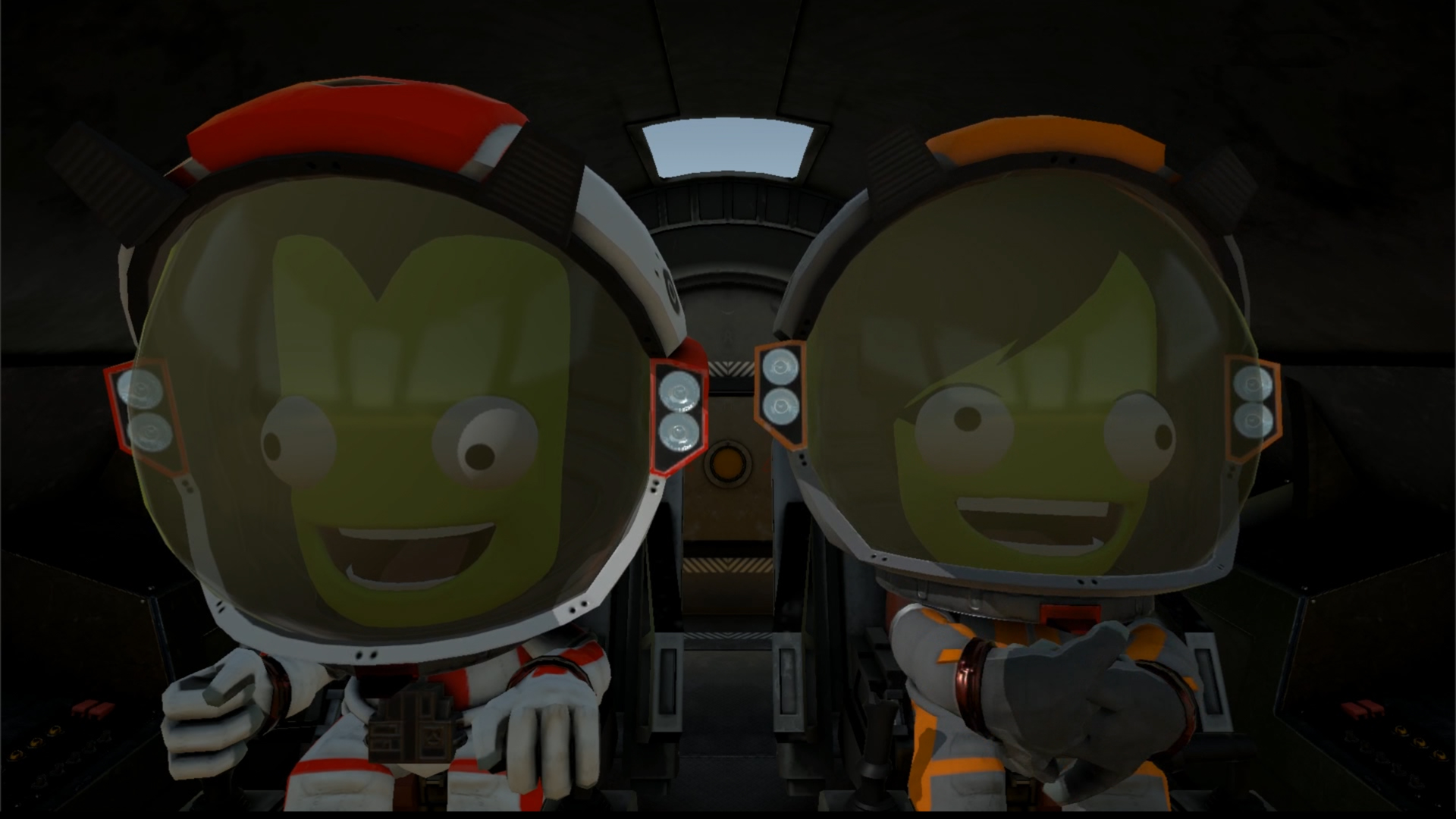
The goal of adventure mode is to provide a far more ambitious campaign for players to embark on, building ships powerful enough to leave the solar system. The structure will include specific missions, but creative director Nate Simpson says these will feel more “compelling” than some of the first game’s missions, which would direct you to fly to a specific latitude/ longitude and trigger a part on your ship. “Those felt grindy. We’re going out of our way to make the mission goals for adventure mode feel meaningful: real firsts that feel unique relative to every other goal in the game.”
Simpson says adventure mode has a lot in common with the first game’s science mode, which gave you unlimited funds but made you earn science points to advance the tech tree. In KSP2, the missions will be there for players who want them, but you can also set your own goals. “You’ll begin to collect science and trigger boom events as you explore what’s out there,” Simpson says.
The campaign is “explicitly designed to be non- punitive” so you’ll never reach a fail state where you’ve run out of money and have to start over. Colonies won’t require tons of micromanagement. If you leave one in a dangerous state, without enough power or food, it’ll simply underperform. You can ignore it and keep on building that next rocket—the one sure to be your masterpiece, once you solve that little ‘exploding on the launchpad’ problem.
It's rocket science

The more time you’ve spent in the original Kerbal’s rocket building module, the more likely you’ll gasp, hand covering your mouth to ward off surprise like it’s an alien facehugger, when you see Kerbal Space Program 2’s new tools. The interface is much refined at a glance: there’s a new toolbar for finer control over objects you’ve selected, and parts within categories are now arranged into size tiers, which was a necessity for the “much higher part count in KSP2,” says Simpson. “In early playtesting, the game became ‘find the part you’re looking for’.”
The truly exciting features take a bit longer to spot. Once you start building with a part, those size categories will intelligently show you other parts that will fit on your rocket. There’s a painter’s palette that lets you colour your ship, customisation that will be essential for multiplayer. You can still rotate the camera 360 degrees, but you can also enter Blueprint mode, which gives you a perfectly ‘flat’ view to facilitate easy symmetry.
And—this is the megaton—you can now build multiple assemblies in the same workspace, rather than having to build a whole rocket in one go. “You can have a bunch of different highly complex elements that are free-floating,” says Simpson. “Then combining them with the symmetry tools, you can make, for example, a radially mounted booster that has a lot of complexity in itself, and then attach or detach it willy nilly.”
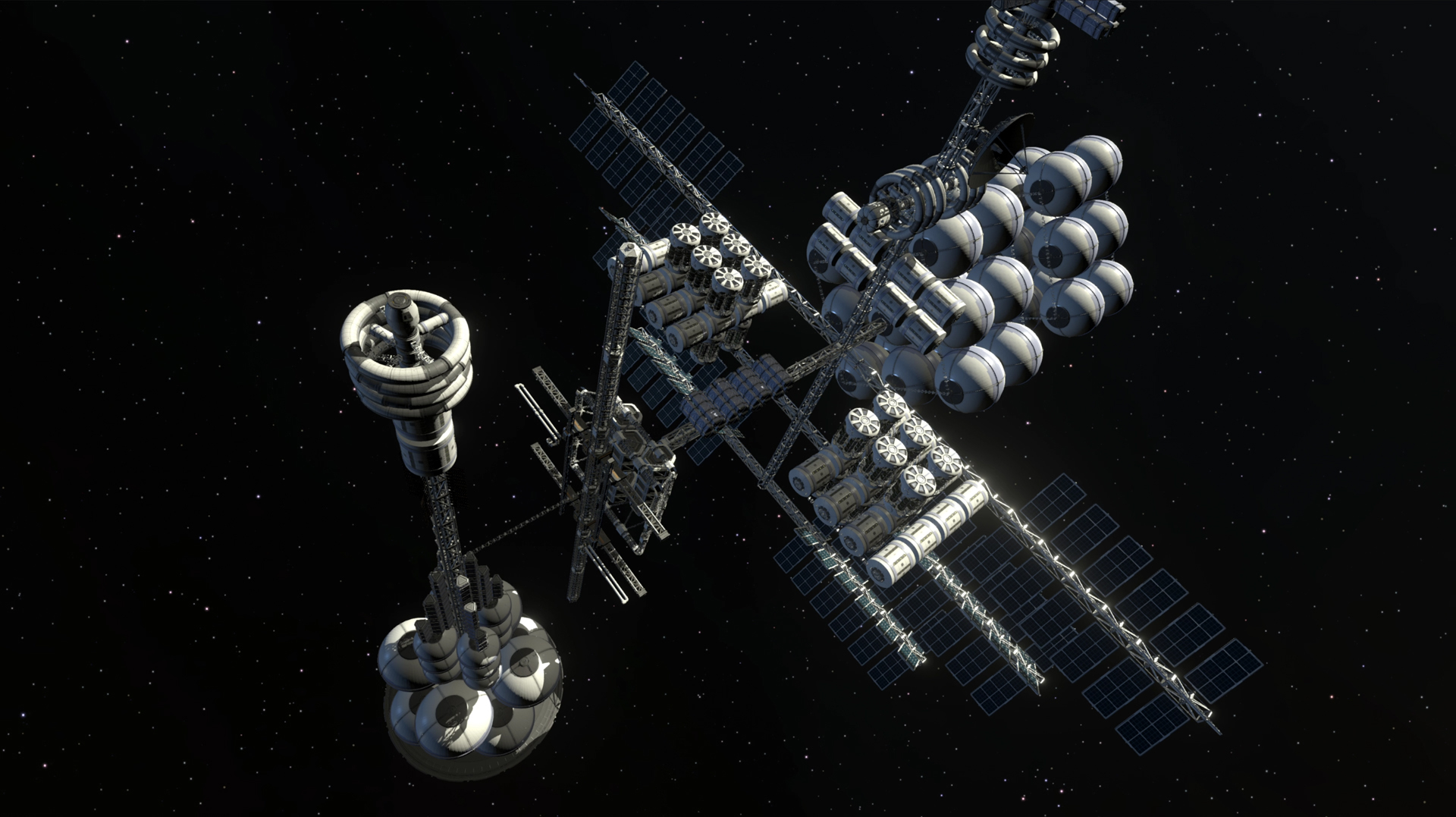
I watched Markham build a rocket, then a booster that would add the fuel and thrust needed to escape Kerbin’s atmosphere. She simply highlighted the sub-assembly, clicked a hotkey to toggle three-way radial symmetry, and then attached three identical boosters to her ship.
You save an entire workspace instead of a specific ship, so you can create variants, with parts and boosters that are easy to swap out for different types of missions. This will come in especially handy as you start building colonies—you’ll have to haul an unwieldy ‘founder module’ and other supplies to the build site, which will require solving a whole different set of physics problems.
The Vehicle Assembly Building has one more huge feature up its sleeve: a built-in trip planner, inspired by community members who created intricate charts to show the potential velocity a rocket will need to reach targets like the Mun or Duna. These became so popular even the developers used them. “I’ll be glad to not have a printout posted on my wall,” says Markham.

For many Kerbal players, the early hours of the game are spent building a rocket and failing to reach your destination, without necessarily understanding why. “This is a way to tighten up that part of the iteration loop, by giving you real-time information about how far your vehicle can go in its current configuration,” says Nate Simpson. The trip planner lets you set a destination and shows the best-case velocity for each stage of your rocket. As you swap out boosters and other parts, you can see how that will affect just how far you can fly.
‘Potential’ is the key word there, because the trip planner won’t stop you from building spectacularly unstable, explosive rockets. Simpson says that with each addition KSP2’s developers have tried to distinguish between “constructive failure” and “frustrating failure." The new tools are meant to ensure failures allow you to learn something (or at least laugh at Jebediah Kerman’s horrified face as your rocket corkscrews back to the ground at a thousand miles per hour).
“We don’t want you to make the same mistake twice,” Simpson says. “We want you to make lots of different mistakes.” And now when you make those mistakes, KSP 2 will have a lot more help to offer.
Class in session
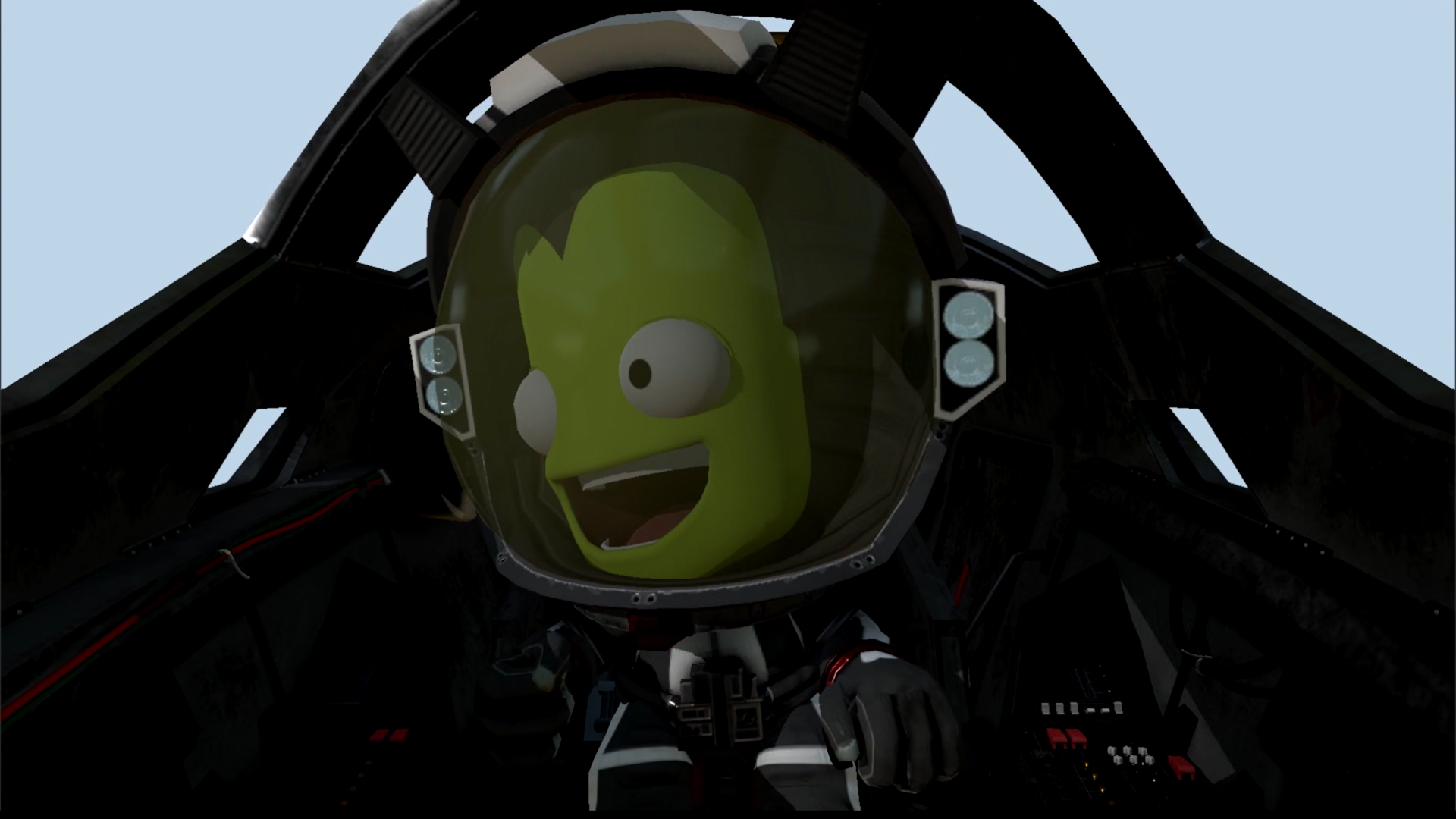
Truly getting into Kerbal Space Program inevitably means spending hours delving into YouTube videos on rocket science and the game itself. Even if you have a physics degree, there’s still a steep learning curve to understanding how the hell to work Kerbal’s interface. KSP2 fixes some obvious oversights and makes the user interface as a whole more elegant.
Flight tools are now clustered together in more logical ways, with navigation on the left and time controls in the centre, a place of prominence that reflects how important fast forwarding will be as you start launching long interstellar journeys. There’s now a pause button, which I fervently hope gets a tool-tip that says ‘DON’T PANIC’.
Pausing will be one of the main ways players access KSP2’s greatly expanded tutorials, which include a mixture of interactive tutorials to guide you through using interface elements, and animations that give you a crash course in rocketry. The example I saw adeptly explained high thrust and low thrust rocket engines with a pair of kerbals biking up a steep hill (see left).
“We’re trying to create a system where the player comes to the tutorial with the desire to gain a specific category of information,” says Simpson. The tutorials will be context-aware, so if you pause after leaving the atmosphere, for example, you’ll be able to easily pull up a tutorial on how to execute a gravity turn to escape Kerbin’s orbit. You’ll perform that manoeuvre in ‘VR space’, then go back to your real rocket and put what you learned to good use. Hopefully.
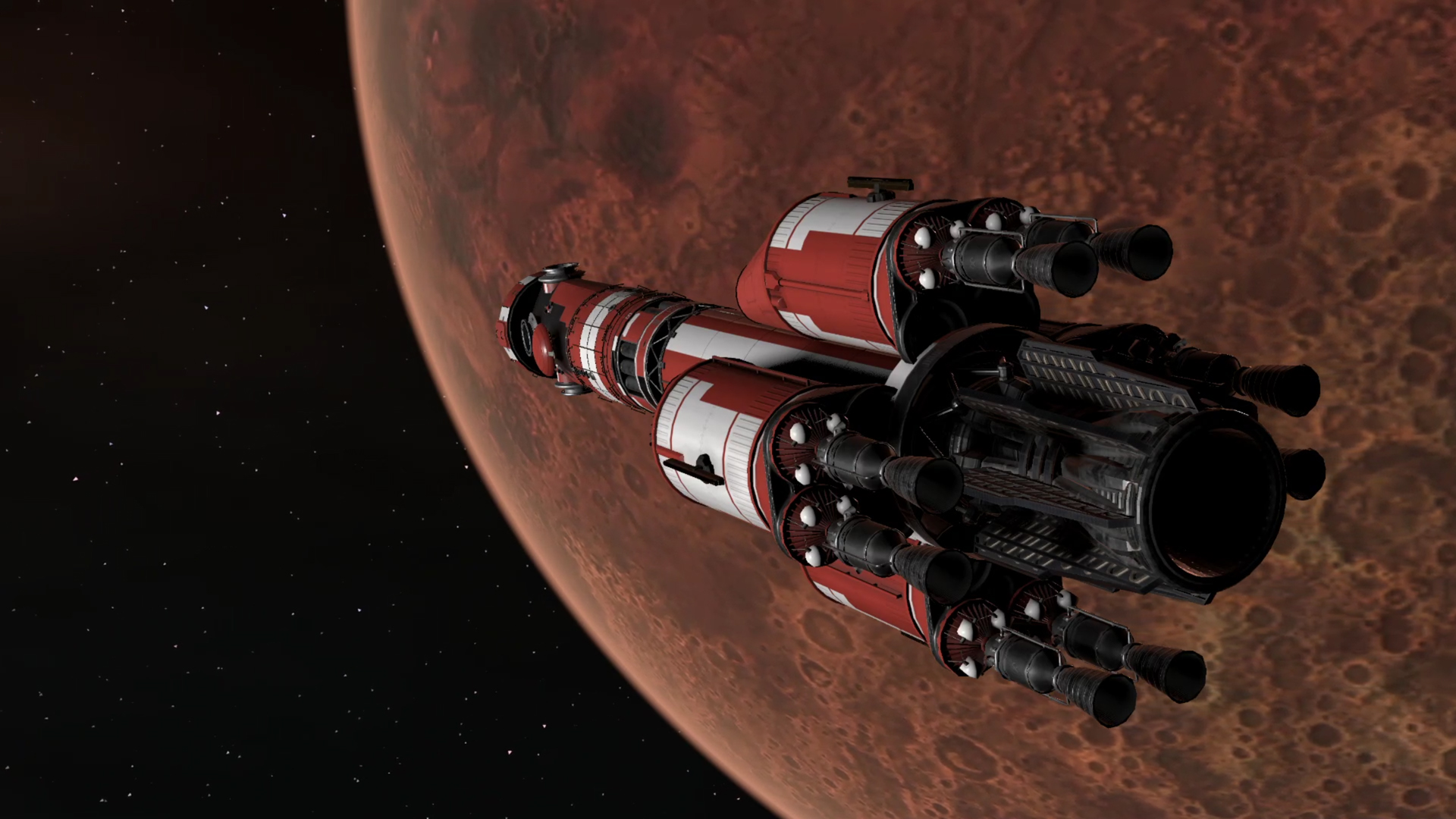
“The big thing for me is that these are actually bite-sized, so you have a whole tutorial section about going to the Mun, but it’s broken up into a large number of subsections so you can learn and practice a specific piece,” says Markham. And the game will make suggestions, too. When a launch inevitably goes awry, the post-flight report can highlight a tutorial based on what went wrong, so you’ll learn as you go.
Given how much of the joy of Kerbal Space Program lies in discovery and personal achievement, there is a risk in over-explaining. The dev team is well aware of that pitfall because they’ve already stumbled over it. In early tutorial iterations they leaned too far into telling players how to play—the most straightforward tutorial, after all, is to tell someone exactly what rocket parts they need to reach their goal—but realised that the gratification comes from figuring it out yourself. “The important thing is to provide people with puzzle pieces and informational context, but don’t tell them how to make the rocket. Concepts, not prescriptions,” Simpson says.
Kerbal Space Program 2 is clearly going to be a far easier game to start playing, but the changes to the UI and a proper campaign mode should excite its loyal kerbonauts, too. What I’m really dying to know—and unfortunately saw precious little of—is what awaits outside the Kerbol System, and what it’s going to be like exploring it with friends in multiplayer.
Space walk with me

I learned precious little about just how big Kerbal Space Program 2 truly is, but I did come away from two days of interviews with some clues. The team is around 30 people and still growing, and that’s not including support from publisher Private Division’s QA team, who the developers praised as being seasoned Kerbal fans and very helpful. It’s easily the biggest team Kerbal has ever had behind it.
The ships you’ll eventually be able to build are immense. Shana Markham showed me a space station with an interstellar craft docked at it, and that ship wouldn’t be possible to construct on the planet’s surface (its engine would take up most of the Vehicle Assembly Building, which places hard limits on the size of whatever you’re building). And I’d be more than surprised if the dev team isn’t keeping even grander ships with more advanced parts, secret for now.
The same goes for the planets you’ll explore and the types of challenges you’ll face landing on them in adventure mode. Simpson says they don’t want to mess with the Kerbol system, which fans know intimately at this point, so much of the environmental work must be going into other parts of the galaxy. There’s also an entirely new game system, called delivery routes, built around connecting your colonies.
“We’ve heard this concern many times from fans, and it’s something we wanted to address really early on in the design, ‘Once I’ve successfully performed a resource delivery between two distant locations, I’m not going to want to do it again’. So you establish those footholds and then let them run automatically,” Simpson says. “The thing that makes it an interesting experience, as you’re setting up all these individual resource collection operations, is the puzzle of successfully landing on and extracting the resources on every celestial body is ideally different enough that you’re having to solve a new set of physics problems with a new vehicle design. That’s even more the case with the new celestial bodies we’re bringing in on some of the other star systems.”

There are multiple solar systems, then, and tech and science advancements that continue well into the intergalactic phase of the game. With mod support already promised, it’s easy to imagine Kerbal Space Program 2 lasting for years after launch, even before updates roll out (and launch is definitely just the beginning of this team’s plans). But how does multiplayer fit in? The developers wouldn’t tell me if it’s going to be small scale or more massively multiplayer. But while talking about colonies Simpson did reveal that “in co-op, if you and your friends have all established a base in a certain spot and are independently bringing different kinds of resources to store at that base, then you’ll be seeing a lot of people coming and going.”
I want to know more about Kerbal 2 desperately. But at the same time I want to forget what I’ve already learned until it’s out in 2021 and I can play it, because that sense of discovery really is the magic of Kerbal. Even more than the new UI, the tutorials, the colonies, and everything else I saw, it’s this line from Nate Simpson that I keep thinking about, which makes me confident this team understands the spirit of Kerbal that lives underneath all the shiny new toys. “One of the things I loved about my first experience with KSP1 was how quiet a universe it was,” he says. “And how I had to come to it.”
Let’s see what’s out there.